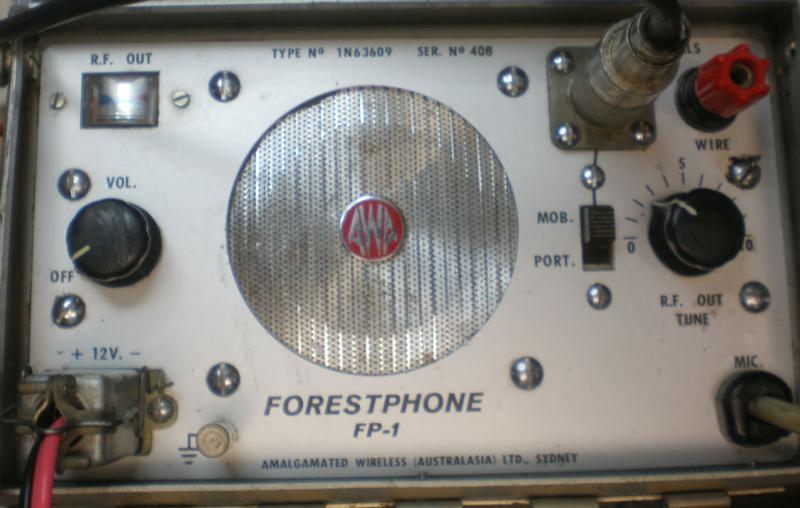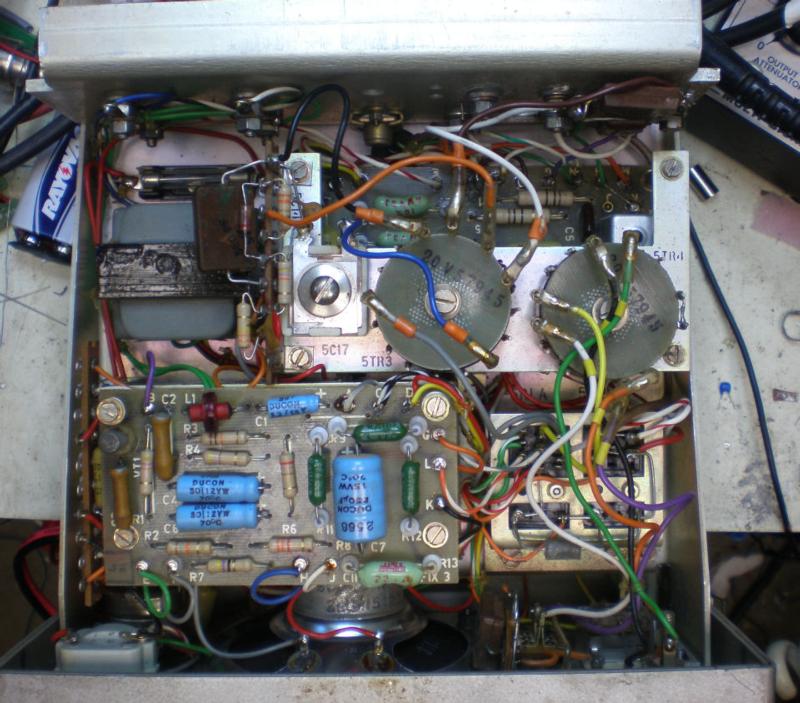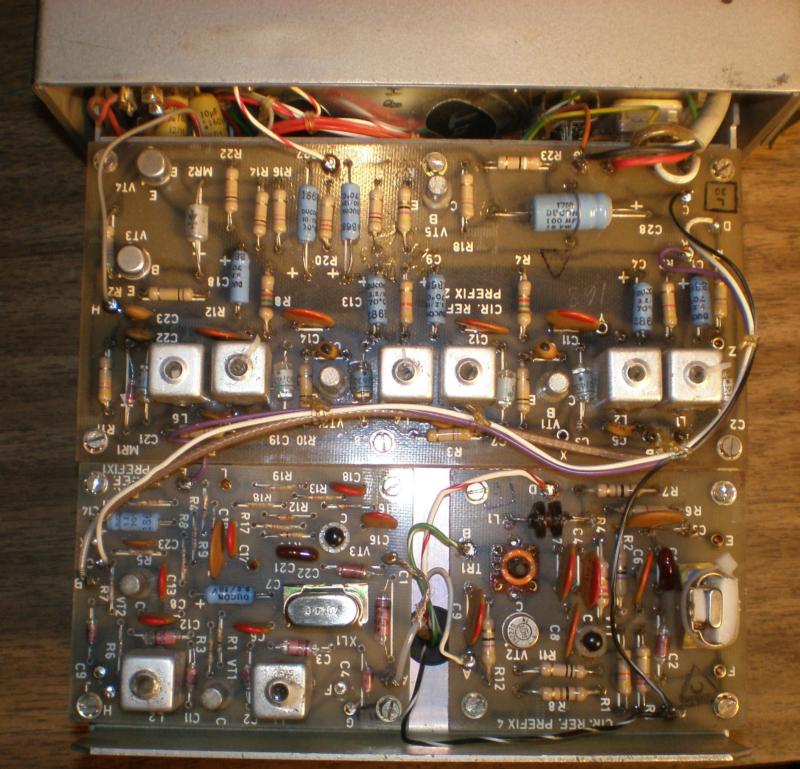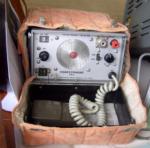
Posted By: Robert Nickels (ranickels) Posted: 01/13/2021 Vintage Ham Radio 01/13/2021 |
Model FP-1 "FORESTPHONE"The Amalgamated Wireless Ltd. (AustralAsia) |
|
This short article about the AWA Forestphone was the last one put on the Midwest Classic Radio Net website by for former webmaster George K9GDT before he unfortunately became a Silent Key. Now that a longer version has been published in Electric Radio magazine I thought I'd include it here as well. Throughout most of the 20th century AWA was Australia's leading electronics company, providing a wide range of radio, television, and audio equipment as well as broadcasting services. Over that time period the company partnered with other companies including RCA, Thorn, Rediffusion, and others to broaden it's product offerings. But as an Australian company, the Forestphone FP-1 no doubt was it's own creation, a small, easy-to-use, portable transceiver designed for use by forestry crews and similar commercial endeavors back when HF radio was the primary means of communication beyond line-of-sight. According to the seller, the FP-1 I recently acquired was "Originally built for the Forestry Commission in the state of Victoria, the last user of this rig was a gliding club, before gliders and balloonists were compelled to move to the VHF air band in the 1980s. They were also used by mobile bee-keepers, inland waterways craft such as houseboats and dredgers, and local government operators in the inland." The FP-1 is all solid-state, a big plus for battery operation in the field, and being a mid-1960s design uses germanium transistors, including a pair of 2N301As as the modulator, a transisitor I remember scavenging from hybrid car radios as a young ham! The PA uses two 2N3879 transistors in a push-pull neutralized output stage which uses a toroidal inductor having 11 taps and a second inductor for antenna tuning/matching. Two output connectors are provided with a switch to select between taps that have been set for mobile (presumably close to a 50 ohm load) and as a loading coil for a portable whip. Unlike some similar sets, the FP-1 uses an external battery, which I see as a plus given how often battery leakage causes damage to portable radios. As the pics show, the interior of the FP-1 is very clean and quite interesting to look at, since many of the locally-sourced components look a bit different from the ones we're more accustomed to seeing. The frequency range is 2-5 Mhz The receiver is a single-conversion superhet that requires a crystal 455Khz above the desired operating frequency and is very sensitive (Under 2µV). Fortunately for me, the radio came equipped with transmit and receive crystals for 3888 Khz, which the seller said was outside the AM allocation in Oz and thus he never was able to use the radio on the air. It took only a slight tweaking of the IF cans to peak it up 3Khz away, on 3885. For transmit, I merely substituted one of the inexpensive HC-49/U crystals from N4ESS, which did not oscillate to begin with. Fortunately again, the radio came with a complete technical manual where I saw that a 33pF cap had been placed in series with the crystal in the Colpitts oscillator, and which was reducing the feedback too much. Bypassing this cap brought the oscillator to life with full output of 12-15 watts with 13.8V supply, or a solid 10 watts from a 12 volt battery. Transmit current drain is as high as 3.8A but the receiver draws only 20ma in standby yet produces lots of audio. For this reason we plan to have the Forestphone "guarding 3885" during next year's Hamvention at Xenia, OH ? so calls on 3885 AM might just be heard! I found little information about the FP-1 online but the pic shows one with the cover and canvas carry bag which I do not have, as show in photos here with permission of Ray Robinson who was more than a little surprised to see mine at the Dayton Hamvention! Small AM (and later SSB) field radios like the Forestphone were the mainstay of the Forests Commission in Australia until the mid-70 when VHF took over. But HF still plays a role in remote regions of the world, and when used with a decent antenna, radios like this are still capable of communication over several hundred miles. In the modern era when satellite communications are available virtually anywhere on earth, it is still fun to remember when HF radio was really the lifeline for anyone more than line-of-sight away from civilization and to recognize the trials and tribulations of that form of communications by restoring and using this equipment on the ham bands. Here's a 30 sec. video from Vkthreepi doing exactly that! WATCH
|
|
Related Images
Click on the image title or on the image itself to open the full-sized image in a separate window.Latest Articles
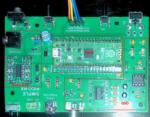
Technical
Posted: 01/29/2025
Comments: 0 |
Pico Rx performance - Excellent performance on 630m WSPR
The Simple Pico Rx is my minimalist implementation of Jonathan Dawson's "Pico Rx" at 101things: https://github.com/dawsonjon/PicoRX In this basic form the receiver consists of a Quadrature Sampling Detector (QSD aka Tayloe) and the Pico2 MCU which handles all DSP functions. There are NO front-end filters, the only bandwidth limitation comes from the tracking filter... READ MORE |
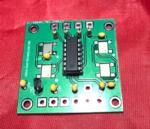
Crystal Replacement
Posted: 08/226/2024
Comments: 0 |
Making SMT "no lead" parts easier to use
SMT is the future - but how can we actually use parts without leads? ... READ MORE |
|
Crystal Replacement
Posted: 02/38/2024
Comments: 0 |
How good can a crummy receiver be?
Hundreds of different simple SDR receivers have been designed around Dan Tayloe's Quadrature Sampling Detector or QSD. Mine add nothing to the state of the art, and in fact subtract things, as I like minimalist solutions and the QSD is right in that sweet spot. Following the evolution of Tayloe's design I delete the resistors in series with the sample lines for inst... READ MORE |
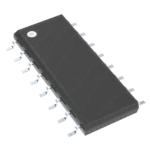
Technical
Posted: 02/37/2024
Comments: 0 |
What's in a number (3253)?
The FST3253 dual four-to-one mux/demux IC has long been used as a "Tayloe Detector" or QSD (and QSE) in low-cost SDRs. They provide incredible performance for such a simple circuit, converting RF to baseband IQ with low loss and the ultimate in simplicity. Unfortunately the original FST3253 part has become obsolete and while substitutes are available, this is where the... READ MORE |
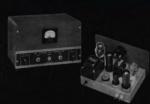
Vintage Ham Radio
Posted: 02/32/2024
Comments: 0 |
The Stancor 10P Transmitter
There weren't really many commercial transmitters in the 1930s as most hams built their own. But many of the ones that were offered came from the transformer companies who had two chances to profit. First, from those who would buy the kit, and two, from those would would see it in the (free) booklets the companies provided to their distributors who would then sell the iron to ham... READ MORE |
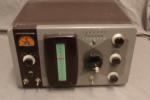
Vintage Ham Radio
Posted: 12/355/2023
Comments: 0 |
The Care and Feeding of the EF Johnson Courier amplifier
The EF Johnson "Courier" is a grid-driven amplifier using two 811A tubes. Switching is provided for operating in either class C for CW or as a class B linear amplifier for AM or SSB. Rated power is 500 watts input for CW, 500 watts PEP input for SSB, and 200 watts input for double-sideband AM with carrier. Since all amateur power levels were meas... READ MORE |

Historic
Posted: 11/329/2023
Comments: 0 |
TV Duplexer
Some things are interesting, even if totally useless nowadays. Such is the case with the Philco 426-3034 Crossover Kit for UHF TV. What the heck is that? Well, back in the late 50s, UHF television stations operating on channels 14-83 started to appear in many areas of the US where viewers had a VHF-only TV antenna, and in many cases an externa UHF converter was... READ MORE |
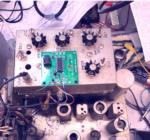
Crystal Replacement
Posted: 11/327/2023
Comments: 0 |
Replacing failed crystals
For decades, quartz crystals were used everywhere a stable frequency source was needed, even in some applications that depended on overtone (harmonic) behavior into the VHF range. These crystals were less stable and more dependent on circuit parameters that fundamental types and thus more problematic. Such was the case with the 94 MHz crystal in the 2 meter converter ... READ MORE |
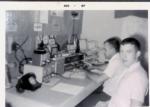
Historic
Posted: 11/315/2023
Comments: 0 |
My Own Ham Radio Story by W9RAN
Everyone has a story of how they got involved in ham radio - this is mine. It started much earlier, including receiving a Knight Kit Span Master shortwave radio for Christmas in about 1963, at age 12. I'll never forget the night my dad and I finished building it and I wanted to try it out. It came with a 50 ft. antenna which was still coiled up - but ... READ MORE |
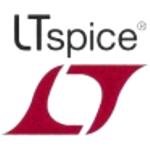
Technical
Posted: 09/267/2023
Comments: 0 |
Hot to simulate vacuum tubes in LTSpice
LTSice is a powerful simulation tool that is provided free by Linear Technology Corp. It comes with a complete library of passive and common analog solid-state components but if you want to use it to simulate vacuum tubes, it doesen't work as-is. Even though triode and pentode symbols can be found in the "Misc" folder, they are just schematic symbols and... READ MORE |

